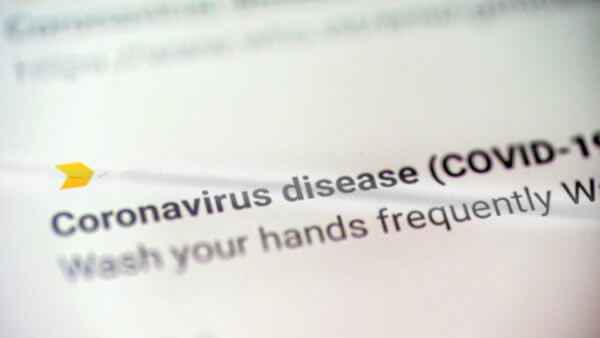Your customers aren’t interested in your COVID messaging anymore, what now?
COVID burnout is real, but the pandemic is not over.
Mounting Evidence of Fatigue
As early as mid-April, roughly three weeks into state lockdowns, there was evidence of COVID-fatigue showing up in audience-engagement data from Chartbeat and Taboola, as well as survey data collected by the Harris Poll (for GCI Health) and communications firm Mitto. The Harris survey found that 93% of respondents were interested in hearing about non-COVID topics and that 66% were feeling overwhelmed by all the coronavirus coverage. Roughly 40% wanted to see “stories of hope and inspiration” instead.
The Mitto survey, which polled 7,000 people in the US, China, Australia Spain and several other countries, found a general appreciation for earlier brand communications about COVID-19. According to the survey, “77% said that the messages they received from brands over the past few weeks have made them feel like brands care about their well-being.” However, 41% of respondents, in mid-April, were then ready to hear from brands about topics unrelated to COVID-19.
The steady stream of “important messages” from CEOs, tips for dealing with “the new normal” and premature cheerleading about “recovery,” created a cacophony of often generic-sounding content. Accordingly, in early April, I wrote about how marketers and brands could differentiate their efforts from the sea of coronavirus content being produced.
Navigating a Complex Audience Landscape
The new challenge is how to move beyond coronavirus communication but not pretend the outbreak is truly over. There’s also the challenge of industry specific issues (dentist vs. restaurant), regional differences, politics and audience age differences. All these variables make brand communication more difficult coming out of the lockdowns than going in.
(The killing of George Floyd in Minneapolis on May 25 has created a new and vastly more charged issue for brands to now address, which is an important but separate topic.)
For some practical perspective on how to deal with COVID-fatigue and content going forward, I turned to Amy Bishop, Owner Cultivative, Michelle Morgan, Director of Client Services, Clix Marketing and Monina Wagner, Social Media and Community Manager at Content Marketing Institute.
Michelle Morgan
My general rule (at this point) is to think about how customers interact with your company. They only want/need to hear about COVID if it will impact their experience of working with you. If you’re a restaurant, you likely need to address COVID since there are guidelines in place and a patron’s experience will be different from normal whether in person or pick up. It doesn’t have to be heavy handed, but there likely needs to be some expectation setting.
On the other hand, if you’re an online retailer that ships electronics direct to consumers, you can likely shift back to more “evergreen” messaging and get back to that sense of normalcy since your customer’s experience is probably the same as it was prior to COVID.
Amy Bishop
I think it depends on the brand. I’ve seen a few brands taking a stance on social distancing and that makes sense for some, depending on their market’s values but it can also be risky. While I wouldn’t necessarily advise to act like COVID is over, I think there are ways to sidestep without referencing it in messaging.
I would still stick to visuals where folks are social distancing (and wearing masks, where applicable). For companies that prefer not to take a stance, it’s best to stick to solution-focused messaging, as that’s always relevant.
Monina Wagner
I’d be OK if I didn’t hear the phrase “unprecedented times” ever again. The COVID burnout is real. Yet fatigue or not, the pandemic is not over. Marketers must be sensitive to the current crisis. We should not make assumptions about where our customers are and what they need right now. Marketers must remember: we are not our audience.
Content marketing is about creating and distributing valuable content. To do this, it’s important to demonstrate a level of empathy towards our customers. This is critical to what we do. Ask your audience how you can help. Then, when they feel comfortable, follow their lead. Encourage them to get back out there. Take this opportunity to inspire them with your content.
This does not mean we have to shy away from topics related to COVID. Just approach it thoughtfully. It does not mean we have to throw out any pre-pandemic content. Analyze what you have then perform an audit to help ensure your work conveys awareness. And if our audience desires new content, we must produce it responsibly.
Many marketers feel pressured to move forward with short-term pivots. But we should be thinking about a long-term strategy to navigate us though this new landscape. COVID has left a lasting impact on us all. But marketers are resilient. We assess. We adapt. And we push forward.




